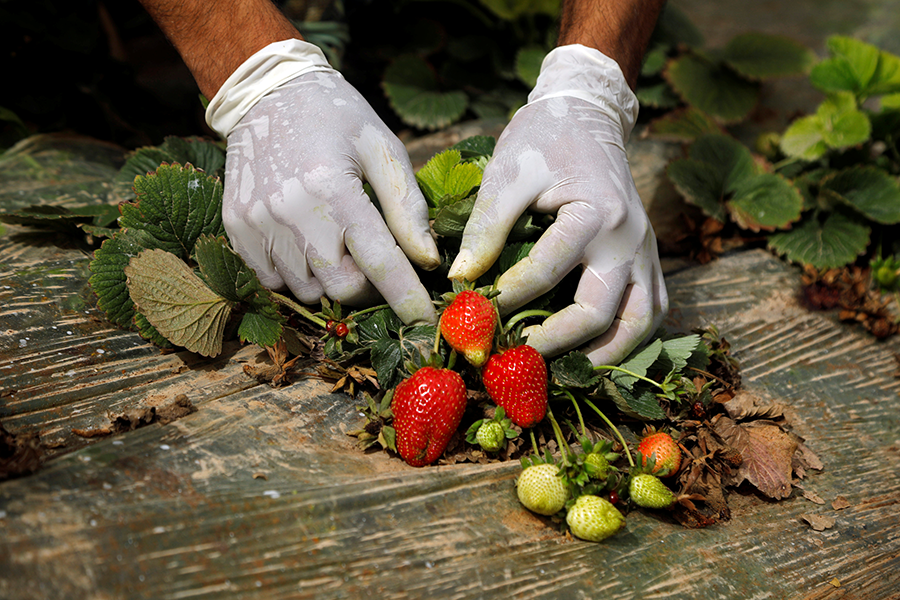Extraction: DNA from strawberries
Loading...
You may hear about scientists analyzing DNA, but have you ever wondered just how they get their hands on it? In this demonstration, you’ll learn how to use common house-hold items to isolate DNA.
Materials: 3 strawberries with the stems removed; 1/3 cup water; 1/2 teaspoon salt; 1 tablespoon dishwashing liquid; cheesecloth or coffee filter; heavy-duty resealable plastic bag; tall narrow glass; chopstick, toothpick, or coffee stirrer; 1/2 cup isopropyl alcohol.
Procedure: Strawberries are ideal for this demonstration because their cells have eight copies of each chromosome, instead of the usual one, meaning there’s a lot of DNA inside.
Why We Wrote This
The ability to study DNA revolutionized the field of biology. But to study it, scientists first have to extract DNA molecules from the rest of an organism.
To begin, place the alcohol in the freezer. Then, put the strawberries in the plastic bag, along with the salt, water, and soap, and squeeze as much air as you can out of the bag before resealing. Now smush the bag’s contents.
The soap breaks apart the cells in a process called lysing. Cell membranes are made of lipids, which get broken down by the soap like grease does on a pan. The salt will help the DNA molecules, which are normally too small to see, clump together.
Once your strawberries are thoroughly smashed, strain the liquid into a narrow glass using a cheesecloth or coffee filter.
With the help of a grown-up, carefully pour the chilled alcohol down one side of the glass. Being less dense than the strawberry liquid, the alcohol will float on top.
Look closely at the boundary between the alcohol and the soapy strawberry juice. The alcohol will cause the salty DNA to precipitate out of the solution. You should see tiny white strands that look a little like egg whites. Using a chopstick, toothpick, or coffee stirrer, you can spool the strands and lift them out of the solution. What you’re looking at are millions of DNA molecules, the building blocks of life.
This column first appeared in the May 27, 2019 edition of The Christian Science Monitor Weekly magazine as part of the Monitor's occasional Science at Home series.








